Effects of Cowl-Induced Expansion on the Wave Complex Induced by Oblique Detonation Wave Reflection
Abstract
:1. Introduction
2. Numerical Methods
3. Results and Discussion
4. Conclusions
Author Contributions
Funding
Data Availability Statement
Conflicts of Interest
References
- Ashford, S.A.; Emanuel, G. Oblique detonation wave engine performance prediction. J. Propul. Power 1996, 12, 322–327. [Google Scholar] [CrossRef]
- Sislian, J.P.; Schirmer, H.; Dudebout, R.; Schumacher, J. Propulsive performance of hypersonic oblique detonation wave and shock-induced combustion ramjets. J. Propul. Power 2001, 17, 599–604. [Google Scholar] [CrossRef]
- Urzay, J. Supersonic combustion in air-breathing propulsion systems for hypersonic flight. Annu. Rev. Fluid Mech. 2018, 50, 593–627. [Google Scholar] [CrossRef]
- Vanyai, T.; Bricalli, M.; Brieschenk, S.; Boyce, R.R. Scramjet performance for ideal combustion processes. Aerosp. Sci. Technol. 2018, 75, 215–226. [Google Scholar] [CrossRef]
- Choi, J.Y.; Kim, D.W.; Jeung, I.S.; Ma, F.; Yang, V. Cell-like structure of unstable oblique detonation wave from high-resolution numerical simulation. Proc. Combust. Inst. 2007, 31, 2473–2480. [Google Scholar] [CrossRef]
- Teng, H.H.; Jiang, Z.L. On the transition pattern of the oblique detonation structure. J. Fluid Mech. 2012, 713, 659–669. [Google Scholar] [CrossRef] [Green Version]
- Braun, E.M.; Lu, F.K.; Wilson, D.R.; Camberos, J.A. Airbreathing rotating detonation wave engine cycle analysis. Aerosp. Sci. Technol. 2013, 27, 201–208. [Google Scholar] [CrossRef] [Green Version]
- Viguier, C.; Figueira Da Silva, L.F.; Desbordes, D.; Deshaies, B. Onset of oblique detonation waves: Comparison between experimental and numerical results for hydrogen-air mixtures. Symp. (Int.) Combust. 1996, 26, 3023–3031. [Google Scholar] [CrossRef]
- Verreault, J.; Higgins, A.J.; Stowe, R.A. Formation of transverse waves in oblique detonations. Proc. Combust. Inst. 2013, 34, 1913–1920. [Google Scholar] [CrossRef]
- Yang, P.; Ng, H.D.; Teng, H. Unsteady dynamics of wedge-induced oblique detonations under periodic inflows. Phys. Fluids 2021, 33, 016107. [Google Scholar] [CrossRef]
- Bian, J.; Zhou, L.; Teng, H. Structural and thermal analysis on oblique detonation influenced by different forebody compressions in hydrogen-air mixtures. Fuel 2021, 286, 119458. [Google Scholar] [CrossRef]
- Yang, P.; Teng, H.H.; Jiang, Z.L.; Ng, H.D. Effects of inflow Mach number on oblique detonation initiation with a two-step induction-reaction kinetic model. Combust. Flame 2018, 193, 246–256. [Google Scholar] [CrossRef] [Green Version]
- Yu, M.; Miao, S. Initiation characteristics of wedge-induced oblique detonation waves in turbulence flows. Acta Astronaut. 2018, 147, 195–204. [Google Scholar] [CrossRef]
- Teng, H.; Bian, J.; Zhou, L.; Zhang, Y. A numerical investigation of oblique detonation waves in hydrogen-air mixtures at low mach numbers. Int. J. Hydrog. Energy 2021, 46, 10984–10994. [Google Scholar] [CrossRef]
- Iwata, K.; Nakaya, S.; Tsue, M. Wedge-stabilized oblique detonation in an inhomogeneous hydrogen-air mixture. Proc. Combust. Inst. 2017, 36, 2761–2769. [Google Scholar] [CrossRef]
- Teng, H.; Tian, C.; Zhang, Y.; Zhou, L.; Ng, H.D. Morphology of oblique detonation waves in a stoichiometric hydrogen–air mixture. J. Fluid Mech. 2021, 913, A1. [Google Scholar] [CrossRef]
- Pratt, D.T.; Humphrey, J.W.; Glenn, D.E. Morphology of standing oblique detonation waves. J. Propul. Power 1991, 7, 837–845. [Google Scholar] [CrossRef]
- Li, C.; Kailasanath, K.; Oran, E.S. Detonation structures behind oblique shocks. Phys. Fluids 1994, 6, 1600–1611. [Google Scholar] [CrossRef]
- Teng, H.H.; Jiang, Z.L.; Ng, H.D. Numerical study on unstable surfaces of oblique detonations. J. Fluid Mech. 2014, 744, 111–128. [Google Scholar] [CrossRef] [Green Version]
- Teng, H.; Ng, H.D.; Kang, L.; Luo, C.; Jiang, Z. Evolution of cellular structures on oblique detonation surfaces. Combust. Flame 2015, 162, 470–477. [Google Scholar] [CrossRef] [Green Version]
- Schultz, E.; Knowlen, C.; Bruckner, A.P. Starting Envelope of the Subdetonative Ram Accelerator. J. Propul. Power 2000, 16, 1040–1052. [Google Scholar] [CrossRef]
- Bachman, C.L.; Goodwin, G.B. Ignition criteria and the effect of boundary layers on wedge-stabilized oblique detonation waves. Combust. Flame 2021, 223, 271–283. [Google Scholar] [CrossRef]
- Wang, K.; Teng, H.; Yang, P.; Ng, H.D. Numerical investigation of flow structures resulting from the interaction between an oblique detonation wave and an upper expansion corner. J. Fluid Mech. 2020, 903, A28. [Google Scholar] [CrossRef]
- Wang, K.; Zhang, Z.; Yang, P.; Teng, H. Numerical study on reflection of an oblique detonation wave on an outward turning wall. Phys. Fluids 2020, 32, 046101. [Google Scholar]
- Wang, K.; Yang, P.; Teng, H. Steadiness of wave complex induced by oblique detonation wave reflection before an expansion corner. Aerosp. Sci. Technol. 2021, 112, 106592. [Google Scholar] [CrossRef]
- Bhattrai, B.; Tang, H. Formation of near-Chapman–Jouguet oblique detonation wave over a dual-angle ramp. Aerosp. Sci. Technol. 2017, 63, 1–8. [Google Scholar] [CrossRef]
- Choi, J.Y.; Shin, E.J.; Jeung, I.S. Unstable combustion induced by oblique shock waves at the non-attaching condition of the oblique detonation wave. Proc. Combust. Inst. 2009, 32, 2387–2396. [Google Scholar] [CrossRef]
- Xiang, G.X.; Gao, X.; Tang, W.J.; Jie, X.Z.; Huang, X. Numerical study on transition structures of oblique detonations with expansion wave from finite-length cowl. Phys. Fluids 2020, 32, 056108. [Google Scholar] [CrossRef]
- Korobeinikov, V.P.; Levin, V.A.; Markov, V.V.; Chernyi, G.G. Propagation of blast waves in a combustible gas. Astronaut. Acta 1972, 17, 529–537. [Google Scholar]
- Ng, H.D.; Radulescu, M.I.; Higgins, A.J.; Nikiforakis, N.; Lee, J.H.S. Numerical investigation of the instability for one-dimensional Chapman-Jouguet detonations with chain-branching kinetics. Combust. Theory Model 2005, 9, 385–401. [Google Scholar] [CrossRef]
- Kim, K.H.; Kim, C.; Rho, O.-H. Methods for the Accurate Computations of Hypersonic Flows: I. AUSMPW+Scheme. J. Comput. Phys. 2001, 174, 38–80. [Google Scholar] [CrossRef]
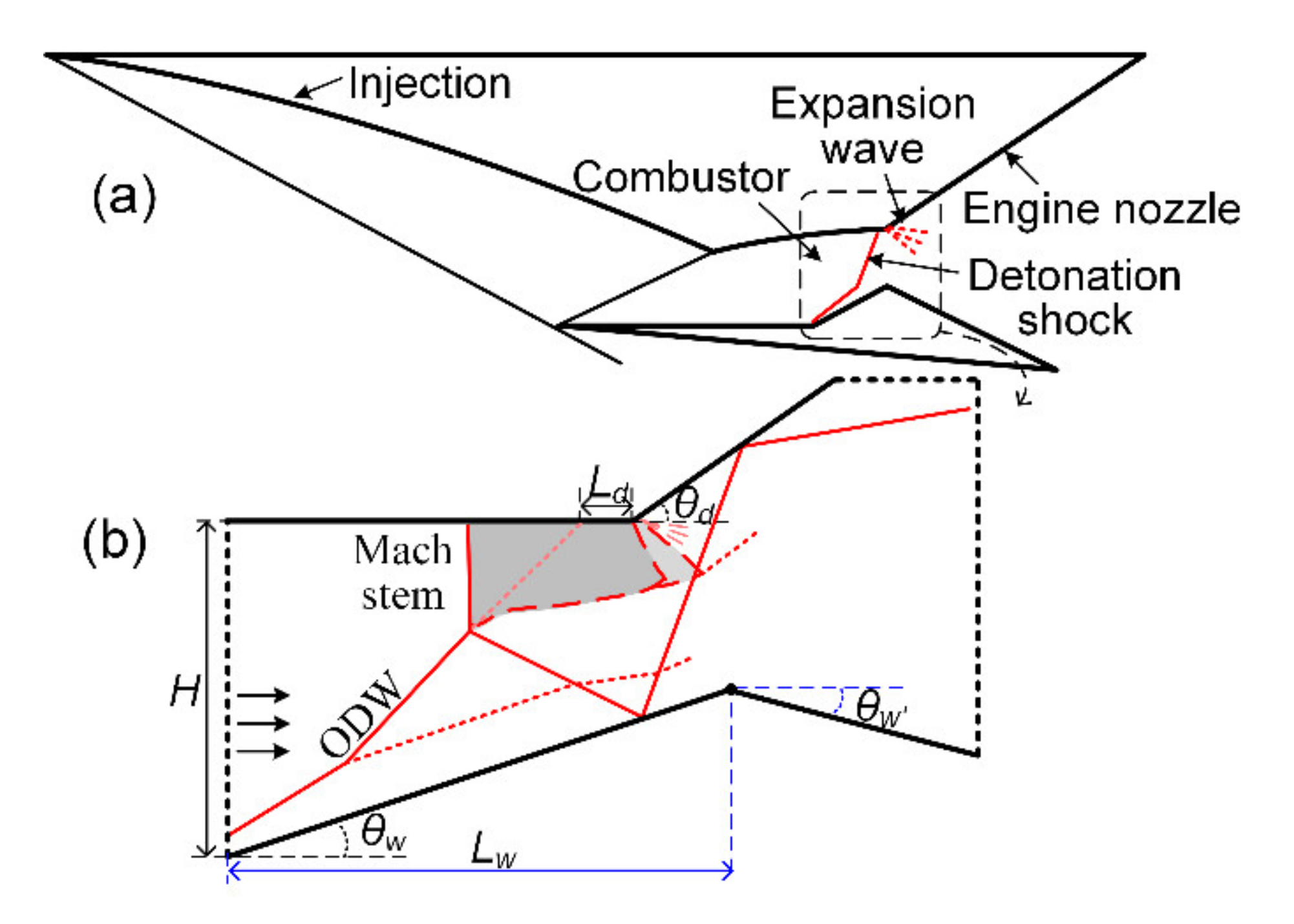
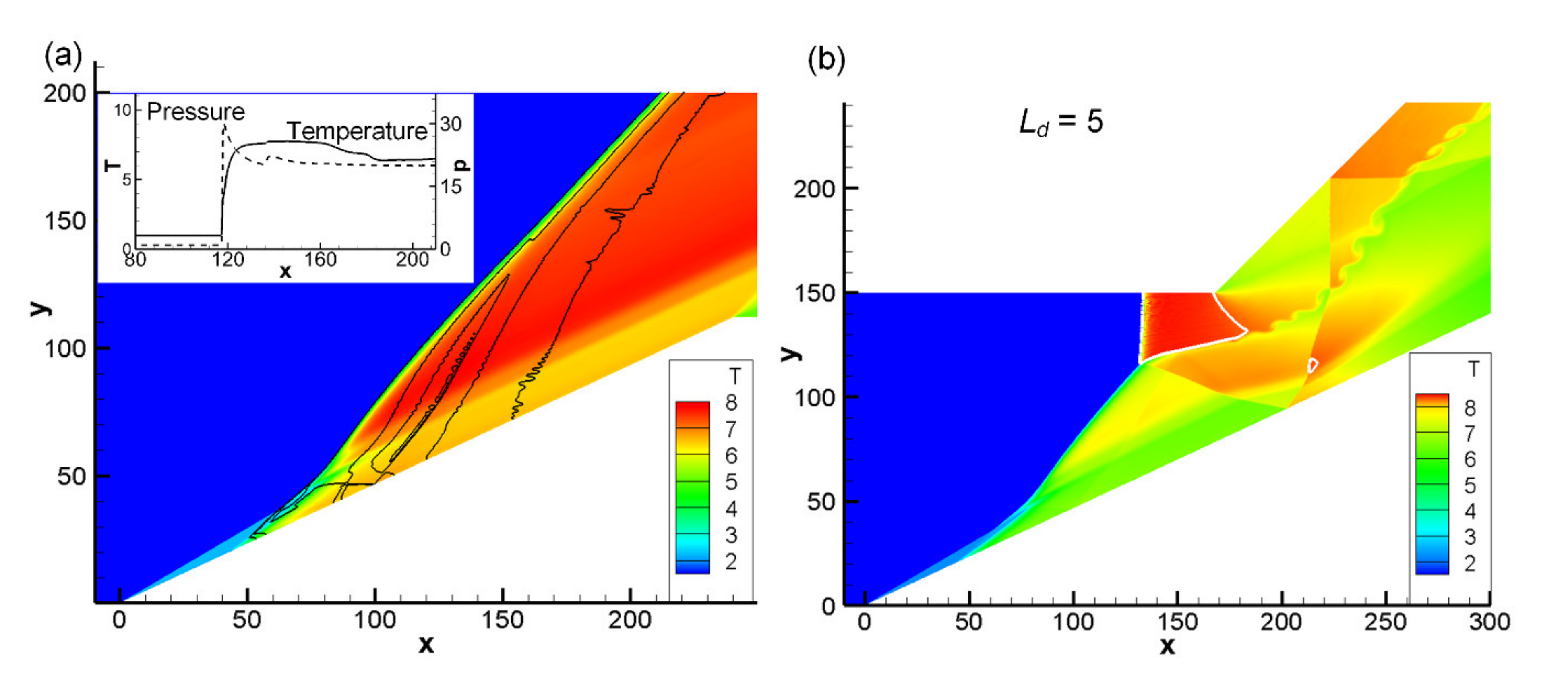

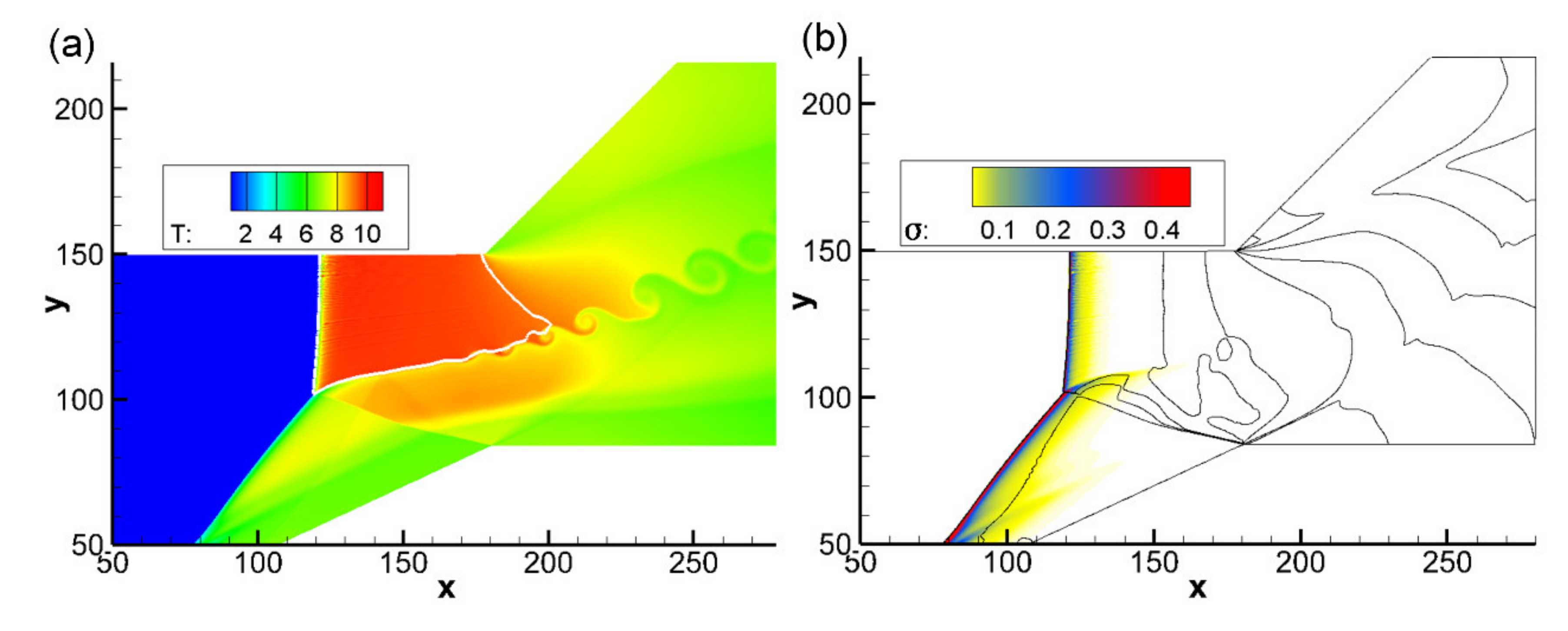
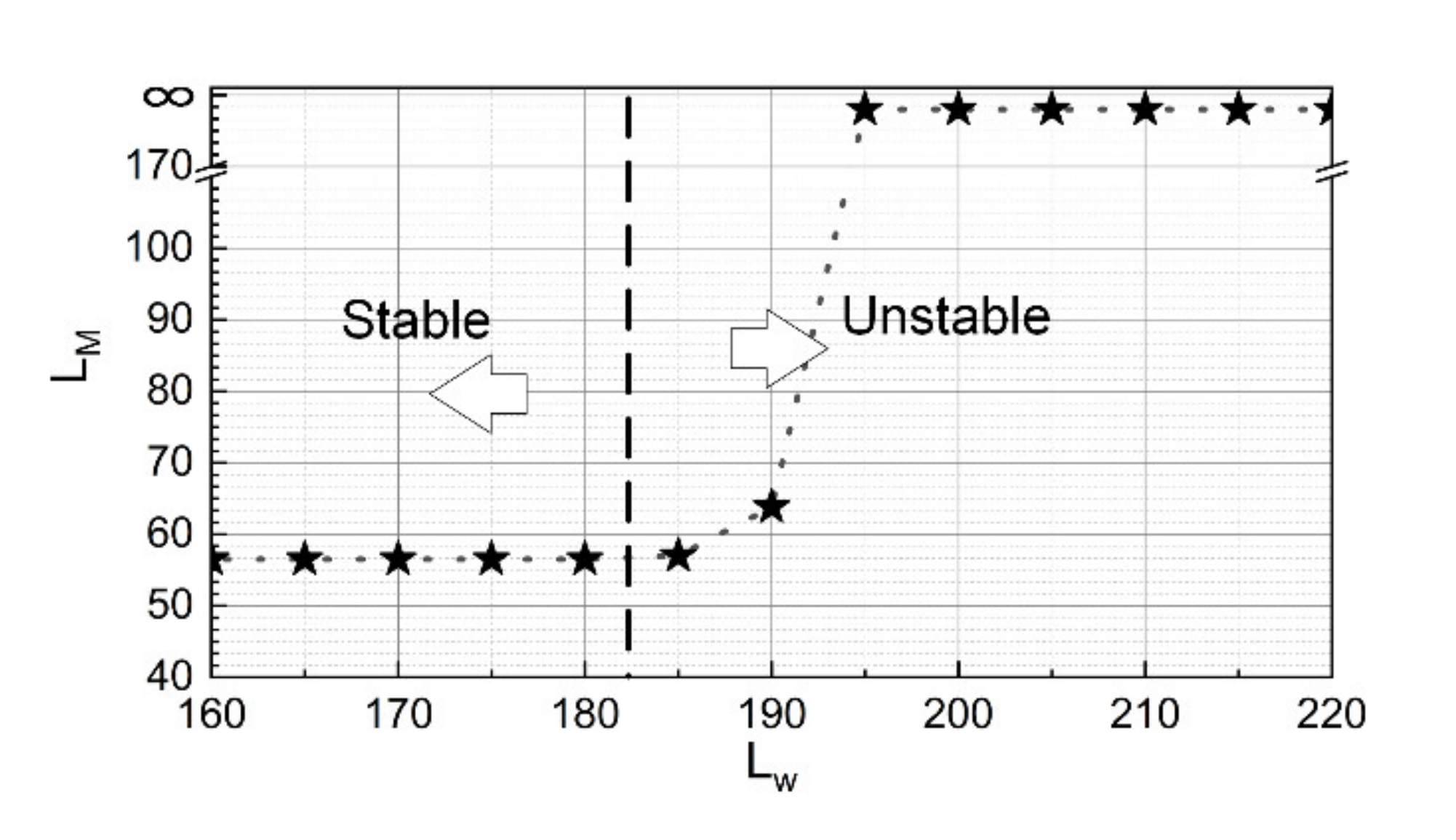


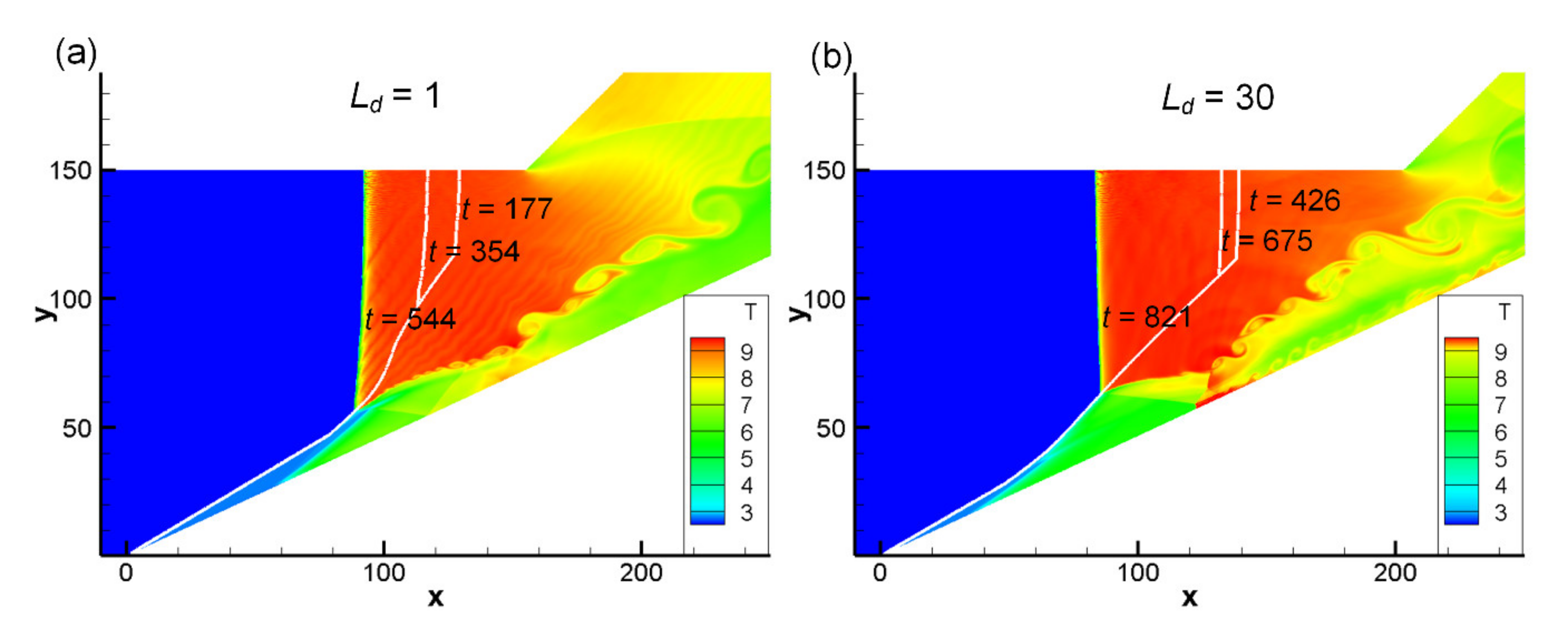

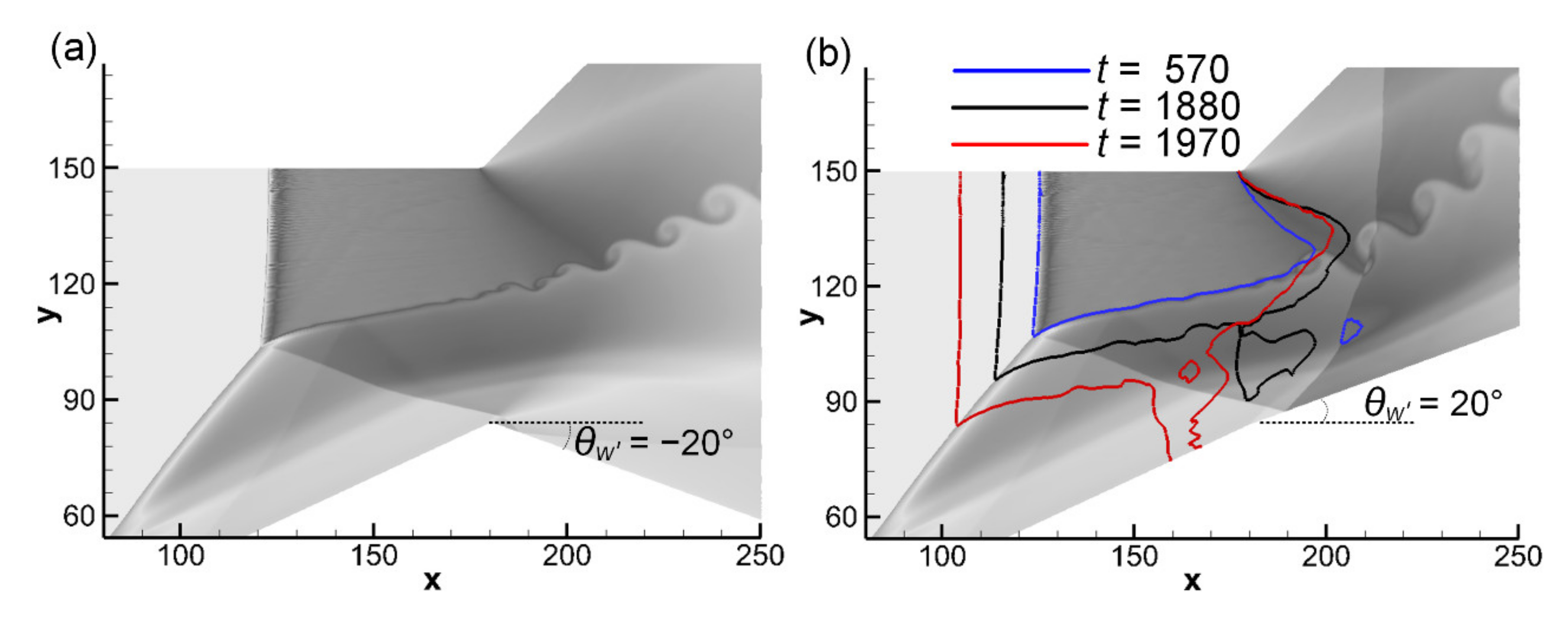
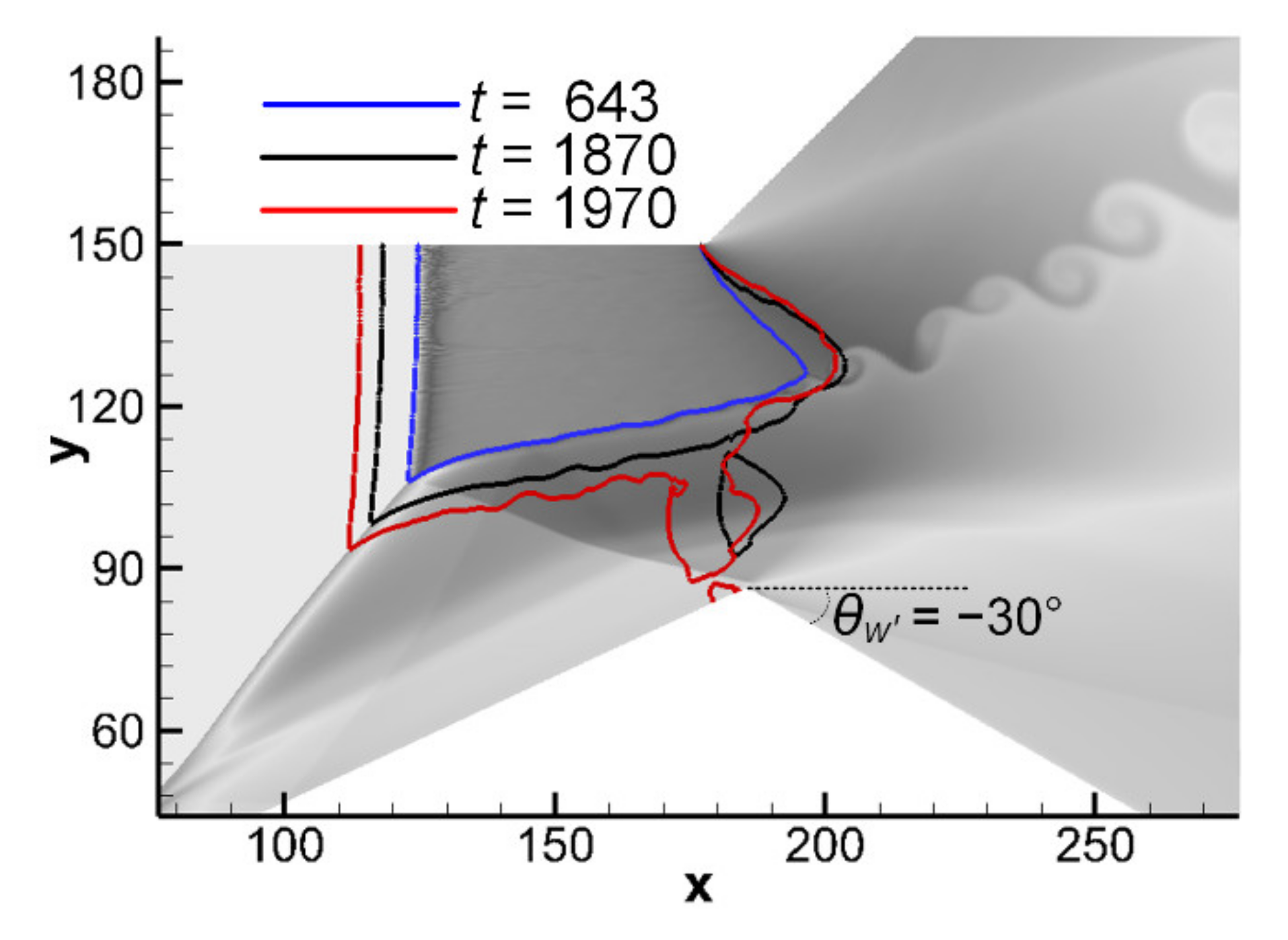
| Q | 25 |
| γ | 1.2 |
| EI | 4.0Ts |
| ER | 1.0Ts |
| M0 | 6.5, 7.0, 7.5 |
| θw | 25° |
| θd | 45° |
| H | 150 |
Publisher’s Note: MDPI stays neutral with regard to jurisdictional claims in published maps and institutional affiliations. |
© 2021 by the authors. Licensee MDPI, Basel, Switzerland. This article is an open access article distributed under the terms and conditions of the Creative Commons Attribution (CC BY) license (https://creativecommons.org/licenses/by/4.0/).
Share and Cite
Wang, A.; Shang, J.; Wang, Q.; Wang, K. Effects of Cowl-Induced Expansion on the Wave Complex Induced by Oblique Detonation Wave Reflection. Processes 2021, 9, 1215. https://doi.org/10.3390/pr9071215
Wang A, Shang J, Wang Q, Wang K. Effects of Cowl-Induced Expansion on the Wave Complex Induced by Oblique Detonation Wave Reflection. Processes. 2021; 9(7):1215. https://doi.org/10.3390/pr9071215
Chicago/Turabian StyleWang, Aifeng, Jiahao Shang, Qiu Wang, and Kuanliang Wang. 2021. "Effects of Cowl-Induced Expansion on the Wave Complex Induced by Oblique Detonation Wave Reflection" Processes 9, no. 7: 1215. https://doi.org/10.3390/pr9071215
APA StyleWang, A., Shang, J., Wang, Q., & Wang, K. (2021). Effects of Cowl-Induced Expansion on the Wave Complex Induced by Oblique Detonation Wave Reflection. Processes, 9(7), 1215. https://doi.org/10.3390/pr9071215







